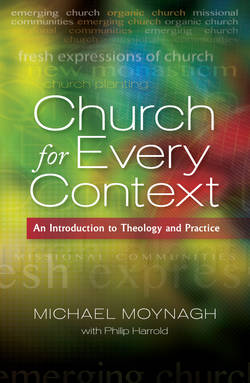Читать книгу Church for Every Context - Michael Moynagh - Страница 38
На сайте Литреса книга снята с продажи.
Jerusalem and Antioch
ОглавлениеHowever, a close reading of the New Testament suggests that homogeneous congregations were very much part of the picture. Gehring argues that Acts 2.46 portrays the Jerusalem church both coming together as the whole church in the temple and meeting as small house churches in private homes (Gehring, 2004, p. 83). These house churches were scattered round the city and would have drawn in people from different networks. Families sharing the same courtyard may have broken bread together, for example (Finger, 2007, p. 238).
Jewish synagogues often met in people’s homes. The Talmudic assertion that there were 390 synagogues in first-century Jerusalem may have been an exaggeration, but there were certainly a considerable number meeting in various parts of the city and catering for worshippers from different social backgrounds.
Acts 6.9 may be referring to no less than five synagogues: one for the freedmen, one for the people from Cyrenaica, one for Alexandrians, one for those from Cilicia and one for those from Asia. (Fiensy, 1995, p. 233)
If the first Jewish churches were influenced by the synagogues, which were the closest model to hand, and followed a similar pattern of attracting people from a specific social group, they would indeed have been homogeneous units. Yet importantly, these units also came together ‘every day’ in the temple courts. Here the different social groupings would have intermingled and the unity of believers been expressed.
The situation in Antioch appears to have been much the same. Gehring believes that Galatians 2.11–4 assumes that a number of house churches existed in Antioch. Peter was accustomed to eating with the Gentiles. When challenged by the Jewish believers from Jerusalem, he began to have table fellowship exclusively with the Jews, a practice made possible by Christians gathering in different homes (Gehring, 2004, p. 112).
Antioch was the third or fourth largest city in the empire and had 18 ethnic quarters (Drane, 2011, p. 160). Jewish synagogues were separated according to ethnic background (Gehring, 2004, p. 113), and it is reasonable to assume that this was true also of the house churches. Ethnic and other social groupings would have lived in different parts of the city, and it would have been natural – if only for convenience – for each house gathering to have drawn in people from its vicinity and from its family and friendship networks.
Gehring does not argue this last point. Indeed, he believes that such separation was improbable because it would have created social barriers in a church that, from its beginning, had been anxious to pull barriers down. Yet as he himself points out (p. 113), the confrontation between Paul and Peter took place in front of the whole Antiochene church – ‘in front of them all’ (Gal. 2.14). This suggests that, as in Jerusalem, all the house churches gathered together from time to time. It was in this setting that people from different ethnic and social contexts most likely met together and expressed their oneness in Christ.
